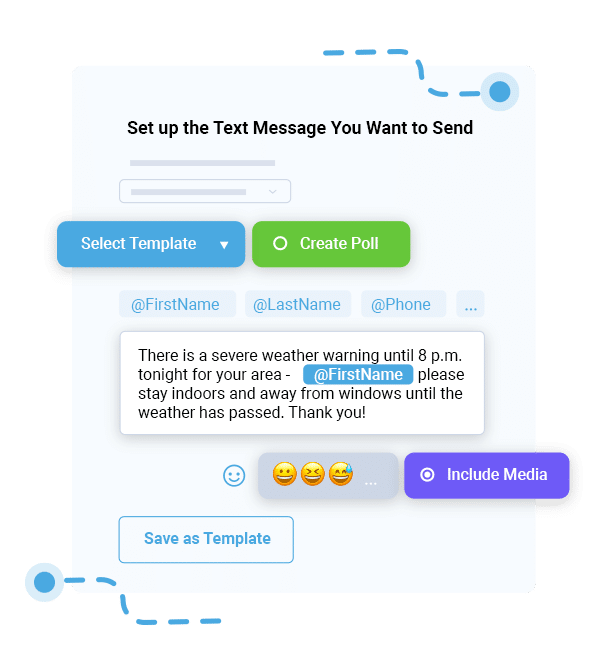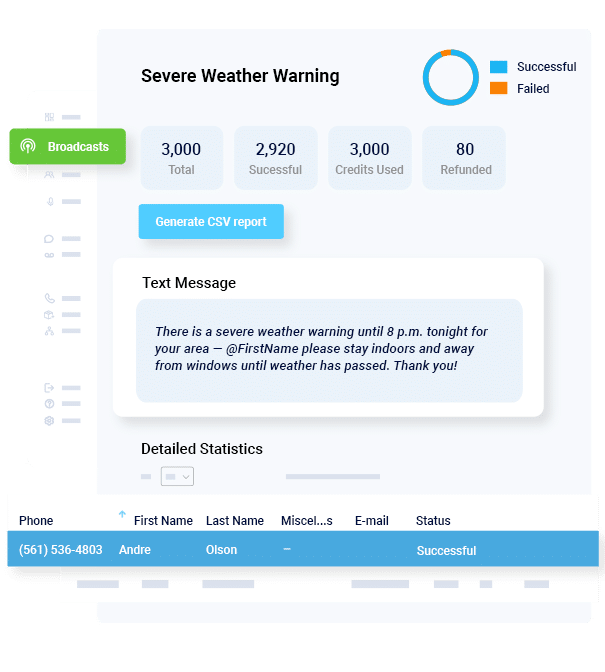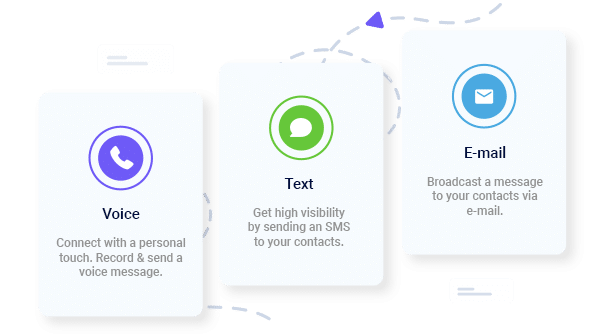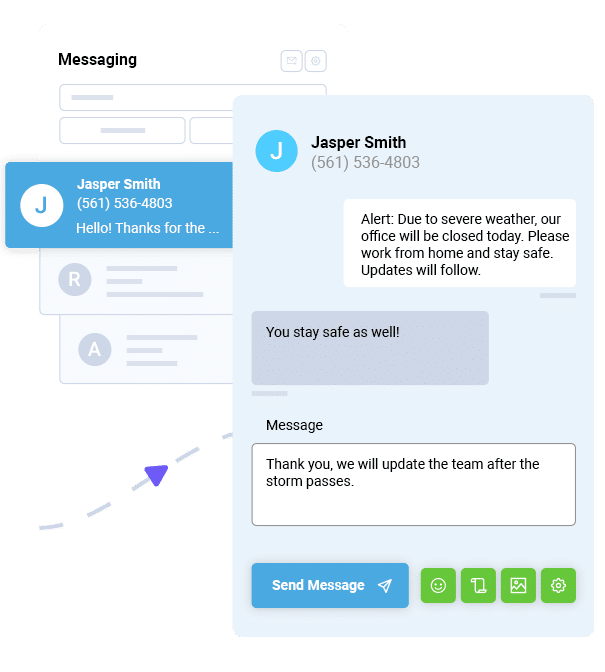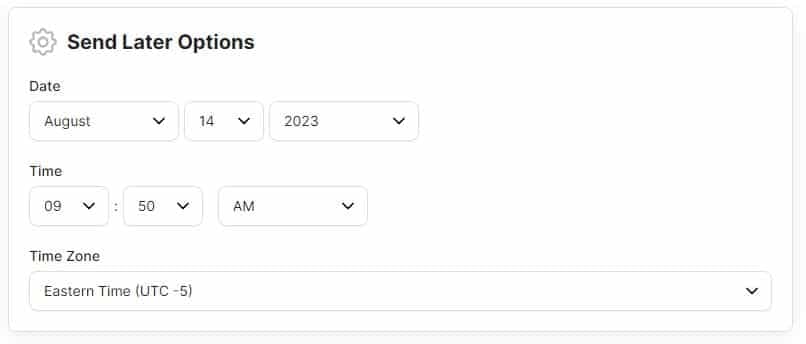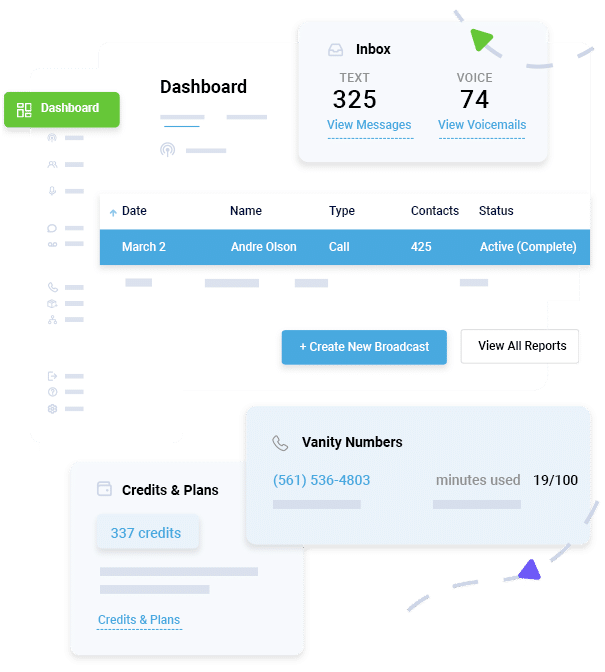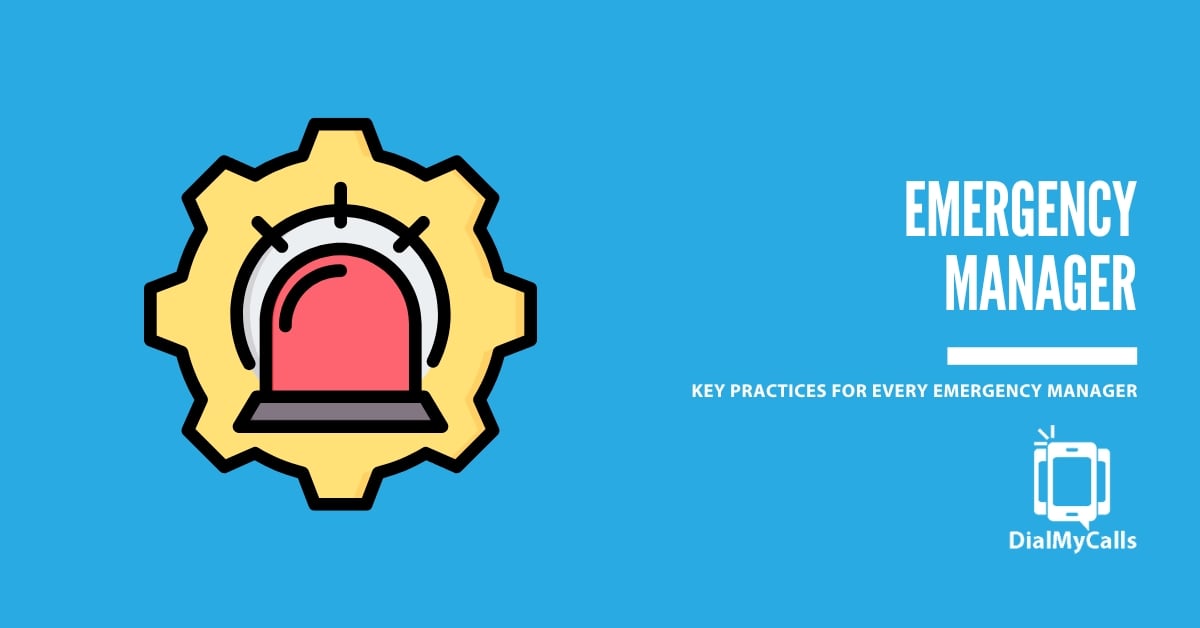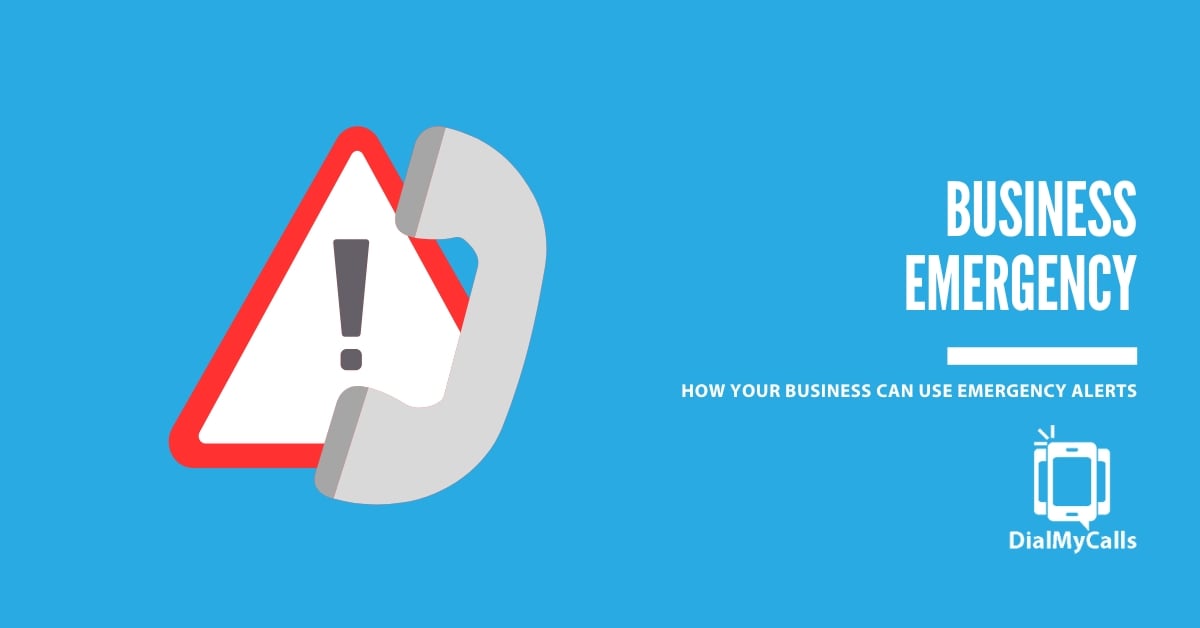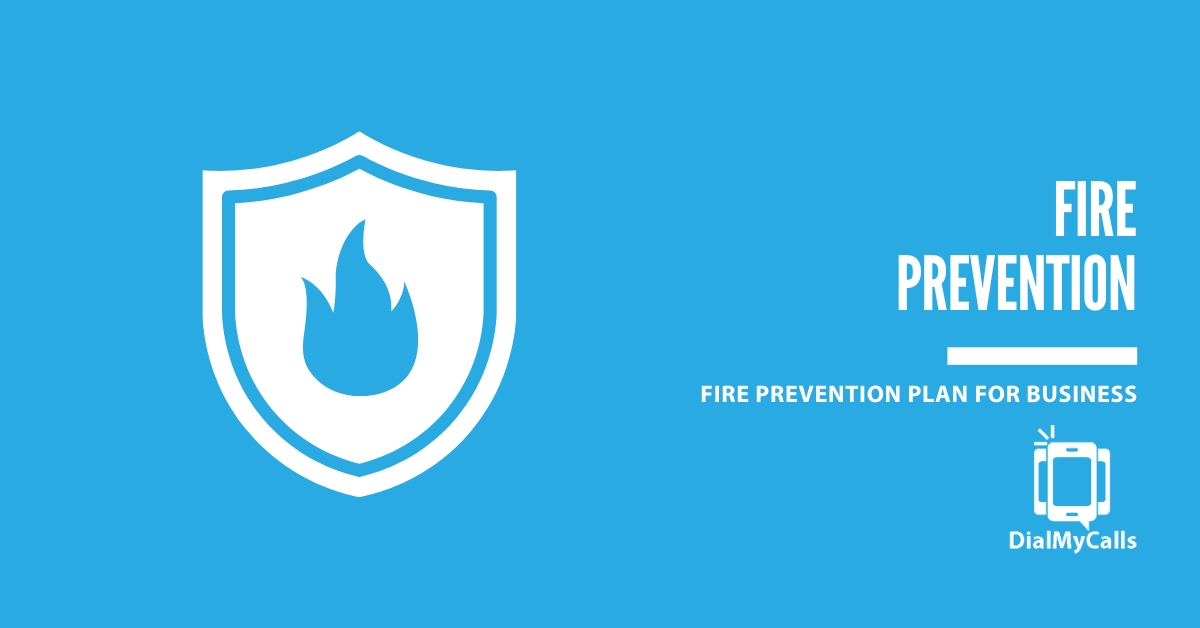Author

Ryan Betancur is an Emergency Management Planner at Hagerty Consulting and a proud US Army veteran. Drawing on years of experience, he specializes in healthcare and critical infrastructure emergency management, strategic planning, and business continuity. Ryan has been on the front lines managing COVID-19 responses in New Jersey and Illinois and supporting NYC's Migrant Crisis response. He holds a master's degree in Homeland Security and Emergency Management and multiple certifications in emergency preparedness.
Try Using DialMyCalls Right Now
Start For FreeRecent Posts
- 8 Creative SMS Marketing Ideas to Boost Engagement This Summer
- 15 Ways to Use QR Codes For Event Promotion & Attendee Engagement
- Top 6 Automated Calling Service Providers For Your Business
- Boost Customer Experience with QR Codes: From Menus to Payments
- Everything You Should Know About Ringless Voicemail
Categories
“I am a youth minister and have spent hours in the past calling students individually to remind them of an upcoming event or to get out an urgent announcement. With DialMyCalls.com, I cut that time down to about 1 minute. I also love how I can see exactly who answered live and how long they listened so I know if they heard the whole message. DialMyCalls.com is the best website I have stumbled upon all year! Thanks!”
Central Baptist Church
Try Using DialMyCalls Right Now
Start For Free5 Ways an Emergency Broadcast System Helps You Stay Safe and Informed
Posted by Ryan Betancur in Emergency Notification on January 15, 2025
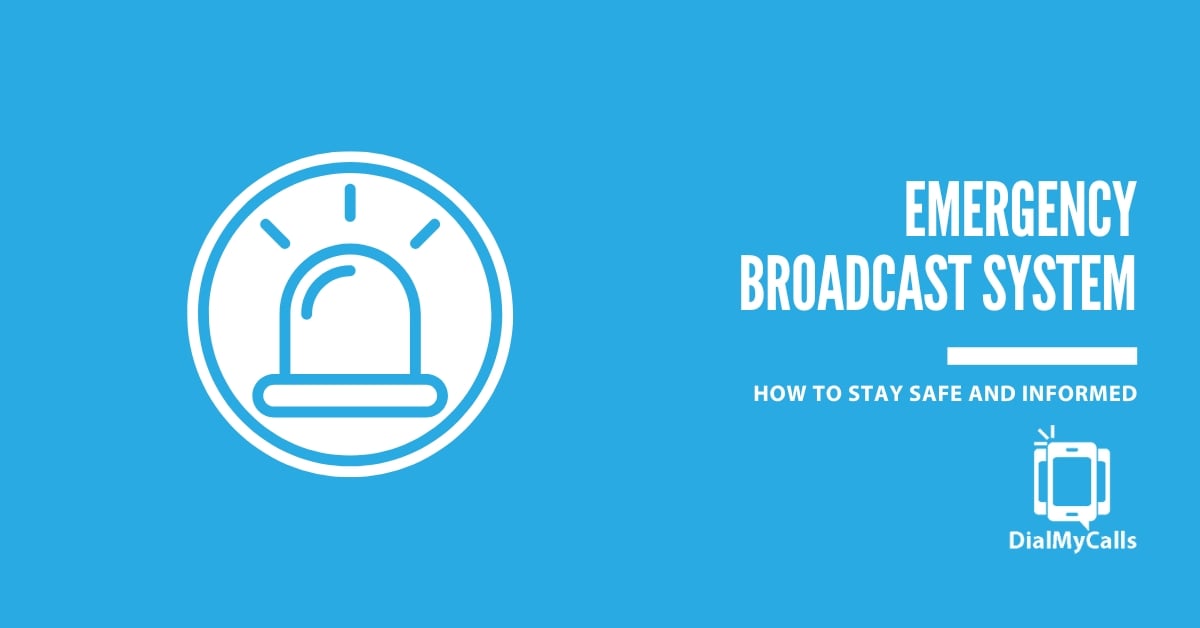
Let’s talk about emergencies—the moments that make your heart pound, your palms sweat, and your inner voice scream, “What now?” Imagine a storm bearing down on your town, a security threat at the public school, or an unforeseen workplace evacuation. In those moments, having a reliable way to communicate with everyone affected can mean the difference between safety and disaster.
Emergency broadcast systems serve as your lifeline in such situations. These systems aren’t just techy gadgets with bells and whistles; they’re lifesaving tools that reduce panic and keep people informed when it matters most.
In this blog, I’ll explain how they work and share the top 5 ways they help keep everyone informed and safe.
What Is an Emergency Broadcast System?
As you may have guessed from the name, emergency broadcast systems are used in emergencies to broadcast a warning message or an update to mass people at once. Using text, voice calls, and email, these systems ensure critical information is sent from multiple channels, which maximizes the chances of everyone getting notified, even in high-pressure situations.
Now, I know a lot of people may have already received such emergency messages once in their lives. However, for those of you who may not have, here are some use cases that will help you understand this tool better:
- Natural disasters: Sending storm warnings or evacuation notices.
- Lockdowns: Alerting schools or businesses during security threats.
- Workplace evacuations: Guiding employees to safety during a fire or chemical spill.
- Public health emergencies: Notify communities about safety precautions, testing sites, or vaccinations during health crises.
- Missing person alerts: Broadcast Amber or Silver Alerts to raise awareness and aid in finding missing individuals.
- Cybersecurity breaches: Alert employees or stakeholders to data breaches and recommend immediate actions like password updates.
- Utility outages: Inform customers about outages or gas leaks and provide restoration updates and safety guidance.
Emergency broadcast systems are the unsung heroes that ensure everyone gets the memo, even when the world feels like it’s unraveling.
Stay Connected with Mass Notifications
Create & Send a Broadcast to Thousands in Seconds
Top 5 Ways an Emergency Broadcast System Helps You Stay Safe and Informed
- Delivers Instant Alerts to Everyone, Everywhere
- Provides Multi-Channel Communication for Maximum Coverage
- Reduces Panic with Clear, Consistent Messaging
- Ensures Communication Even When Networks Are Overloaded
- Improves Emergency Preparedness and Response
Delivers Instant Alerts to Everyone, Everywhere
In critical situations, delays in communication can mean the difference between safety and danger. Emergency broadcast systems excel at sending alerts to large groups instantly, ensuring no time is wasted.
These systems are particularly effective during high-stakes scenarios like school lockdowns, where immediate communication is vital to protect students and staff. Alerts can be sent through SMS, voice calls, or push notifications, allowing recipients to receive real-time updates.
Example: Imagine a severe thunderstorm approaching a community. An emergency alert system sends notifications to residents’ phones in seconds, advising them to take shelter. No manual texts. No missed calls. The rapid dissemination of information helps families get to safety before the storm intensifies.
Provides Multi-Channel Communication for Maximum Coverage
You know how some people live on their phones, while others practically have to dust off their email accounts? Yeah, emergencies don’t have time to cater to individual preferences. That’s where multi-channel capabilities come into play.
As I mentioned before, emergency broadcast systems can cover all your bases—text messages, voice calls, emails, and even social media updates to ensure the message gets through. This is regardless of how someone prefers to communicate. This layered approach minimizes the risk of missing critical updates.
Example: During a fire evacuation in a large office building, employees in noisy areas may miss a text alert but can still receive a voice call. Those working remotely might get an email. The redundancy ensures everyone is informed and able to act quickly.
Reduces Panic with Clear, Consistent Messaging
Chaos thrives on confusion. Muddled messages, half-baked instructions, or radio silence can turn an already stressful situation into a full-blown disaster. Emergency broadcast systems are designed to send clear and uniform messages that reduce panic and provide specific instructions.
Messages can be customized to include step-by-step guidance, ensuring recipients know exactly what actions to take. When people know what to do, panic subsides, and order emerges. It’s like giving the chaos a tranquilizer dart.
Example: During a hurricane evacuation, residents receive notifications outlining evacuation zones, available shelters, and recommended travel routes. These updates keep people calm and focused on safety rather than worrying about what to do next.
Ensures Communication Even When Networks Are Overloaded
Emergencies often create surges in communication as people attempt to contact loved ones or seek updates. We’ve all been there—trying to make a call during a big event or emergency, only to hear that annoying “beep-beep” indicating the network is jammed. It’s frustrating on a good day and downright dangerous during a crisis.
Emergency broadcast systems are designed to handle these high-traffic situations, using dedicated channels and robust infrastructure to ensure messages get through. They can also integrate with satellite networks or radio systems as backups.
Example: After an earthquake, local phone lines are overwhelmed with calls. An emergency broadcast system bypasses the congestion to deliver vital updates to residents and emergency responders, ensuring critical information is not delayed.
Improves Emergency Preparedness and Response
The best way to manage an emergency is to prepare before it happens. Emergency broadcast systems enable organizations and governments to plan ahead with features like preloaded templates, emergency contact lists, and pre-scheduled alerts.
These tools allow decision-makers to focus on executing the plan during a crisis rather than scrambling to create messages from scratch. The faster the response, the more effective it is at preventing harm.
Example: A government agency in an earthquake-prone region creates prewritten messages for scenarios like evacuations, aftershock warnings, and road closures. When an earthquake strikes, these messages are sent immediately, saving valuable time and ensuring a coordinated response.
Why DialMyCalls Is the Best Emergency Broadcast Solution
When emergencies strike, you need a system that works as fast as you think. Not all systems are created equal, and if you’re looking for a solution that delivers on all fronts, DialMyCalls is the name to know.
Here’s what makes DialMyCalls stand out:
- Instant Alerts, No Delays: Whether it’s a text, voice call, or email, your message gets delivered in seconds. Because in emergencies, every moment counts.
- Simplicity at Its Best: No need to fumble with complicated settings. With preloaded templates and an intuitive platform, you can send alerts with just a few clicks.
- Built to Scale: Whether you’re a small school, a midsize business, or a large enterprise, DialMyCalls adapts to your needs seamlessly.
- Rock-Solid Reliability: Even during high-traffic emergencies, DialMyCalls ensures your messages get through, keeping everyone connected when networks are overwhelmed. No ifs, ands, or buts.
- Proven Track Record: From schools to hospitals to government agencies, DialMyCalls has earned the trust of organizations across the board. But why take my word for it, right? Here, see some case studies for yourselves.
Wrapping Up – Stay Safe, Stay Ready!
Emergencies don’t wait for you to get your act together, and they certainly don’t come with a pause button. Whether it’s sending out instant alerts, ensuring no one misses the message, or keeping calm in chaotic moments, an emergency broadcast system is your ultimate safety net.
With tools like DialMyCalls, you can protect your community, team, or loved ones with confidence. It’s not just about staying informed—it’s about being prepared to act when it matters most.
So, why leave safety to chance? Equip yourself with the power to communicate swiftly and clearly in any crisis. Get started with DialMyCalls today and turn “what if” into “we’re ready.” Here, try it for free.
Keep Everyone Connected & Informed
Get the Word Out Quickly with Bulk Texting and Voice Calls
